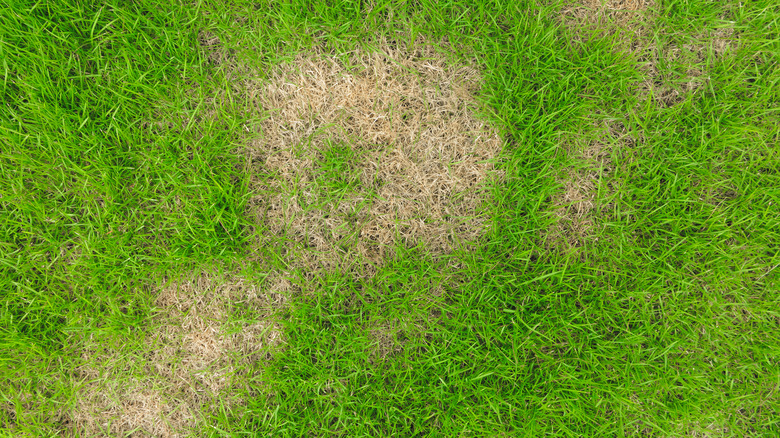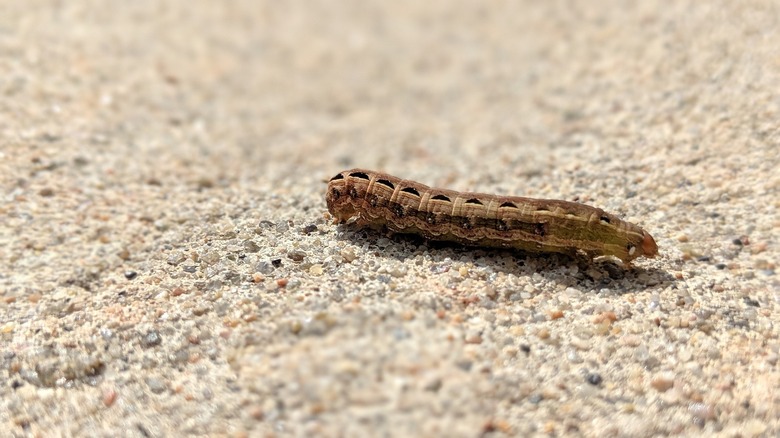How To Get Rid Of Cutworms Before They Destroy Your Lawn
Cutworms have the potential to quickly turn your lush green lawn into a patchy mess if left unchecked, so it's critical to understand their behavior and implement effective eradication methods. Cutworms are the larvae of several species of night-flying moths belonging to the Noctuidae family, and they are commonly found in North America. These caterpillars vary in color, ranging from gray, brown, or black to tan, pink, or green, and typically measure around 1 inch in length. They are primarily active at night, retreating to the soil during the day, which often makes them difficult to detect until significant damage has already occurred.
Cutworms derive their name from their feeding behavior, as they tend to sever the stems of young plants at the soil level, effectively cutting them down. They prefer feeding on a wide range of plants, including grass, vegetables, flowers, and ornamental plants, making lawns particularly susceptible to their assault. A combination of preventive measures and targeted control methods is crucial to eliminate them and protect your property.
Identifying cutworms in your yard
If you find a caterpillar you think might be a cutworm, poke or move it. If it curls into a "C" shape, it is likely a cutworm, especially if you spot it in the evening. Since they typically hide during the day, looking for signs of cutworms can be more helpful. For instance, they often leave behind chewed grass debris or partially consumed blades in the affected areas. These remnants may be visible on the surface of the lawn or accumulated around the base of grass plants. Check the stems of young plants for signs of cutworm damage at or just below the soil level.
In addition, look for small holes or tunnels near damaged patches. These tunnels can be an additional clue left behind by the creatures' practice of burrowing into the soil during the day. Pellet-shaped droppings are another sign of these pests. Finally, as the infestation progresses, you may notice an increase in bird activity, as they are attracted to the larvae as a food source.
Control and prevention methods
One effective natural method for eradicating cutworms is introducing natural enemies, such as beneficial nematodes, into your lawn. These organisms prey on the larvae and help regulate their population. Another organic option is using botanical insecticides like neem oil, which disrupts their growth and feeding patterns. Additionally, homemade remedies like garlic or chili pepper sprays can be applied as natural deterrents. Finally, chemical control options can be used when other methods are ineffective, or the infestation is severe. Select an insecticide specifically formulated for cutworm control. Then, apply the insecticide to affected areas of your lawn, targeting the soil and base of plants where they hide.
Prevention is critical to avoiding future infestations and minimizing damage to your lawn. Maintain proper lawn care practices, including regular mowing, appropriate watering, and balanced fertilization. By keeping your property healthy, you make it less attractive to cutworms. Clear away debris and remove weeds, as these provide hiding places for them. Consider using physical barriers like collars made from cardboard or plastic around vulnerable plants. Encourage natural predators and beneficial insects by creating bird-friendly habitats and minimizing pesticide use. Finally, keep an eye out for signs of cutworms or any potential issues, allowing you to take immediate action at the first sight of trouble.


